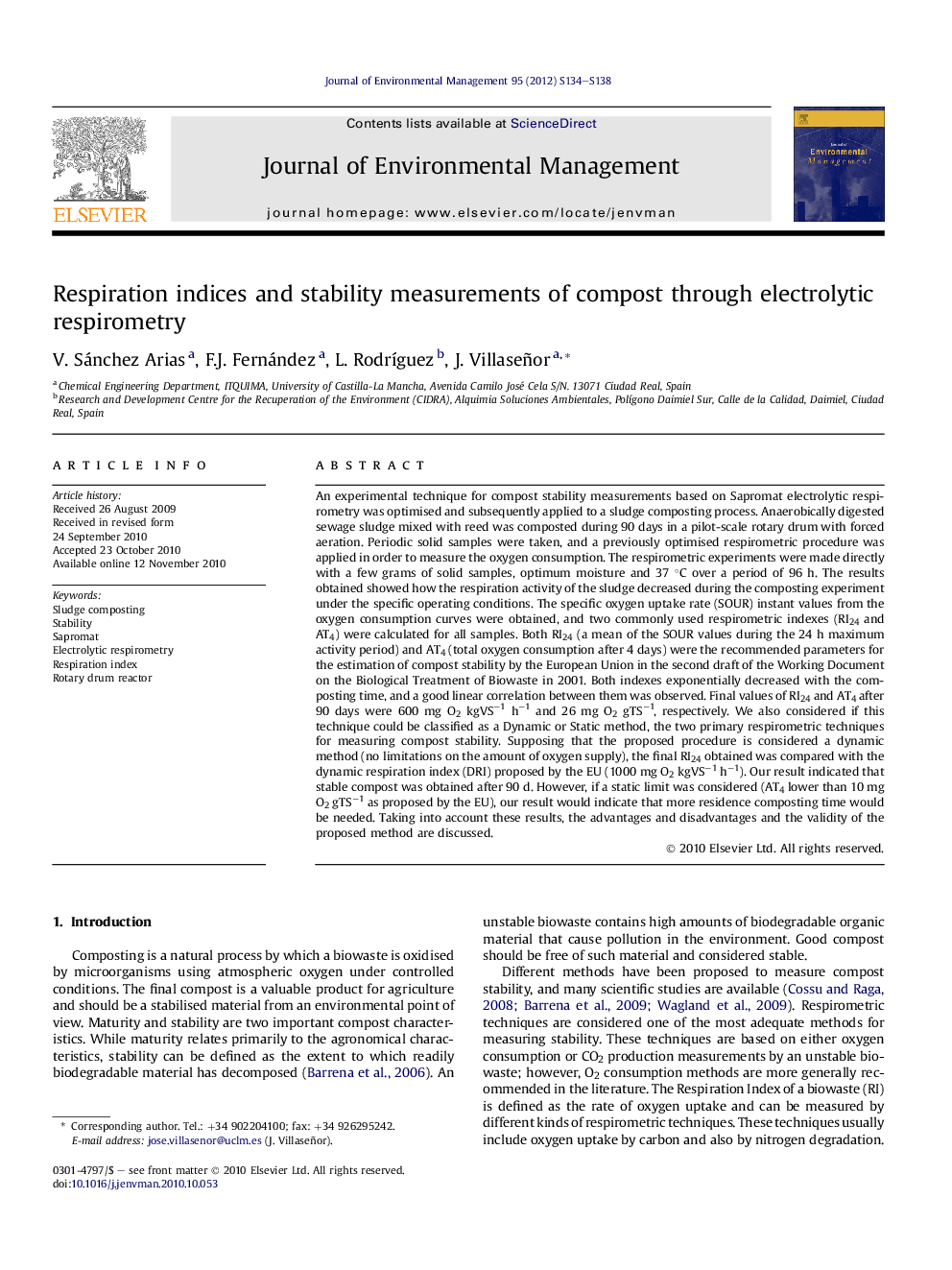| Article ID | Journal | Published Year | Pages | File Type |
|---|---|---|---|---|
| 1057041 | Journal of Environmental Management | 2012 | 5 Pages |
An experimental technique for compost stability measurements based on Sapromat electrolytic respirometry was optimised and subsequently applied to a sludge composting process. Anaerobically digested sewage sludge mixed with reed was composted during 90 days in a pilot-scale rotary drum with forced aeration. Periodic solid samples were taken, and a previously optimised respirometric procedure was applied in order to measure the oxygen consumption. The respirometric experiments were made directly with a few grams of solid samples, optimum moisture and 37 °C over a period of 96 h. The results obtained showed how the respiration activity of the sludge decreased during the composting experiment under the specific operating conditions. The specific oxygen uptake rate (SOUR) instant values from the oxygen consumption curves were obtained, and two commonly used respirometric indexes (RI24 and AT4) were calculated for all samples. Both RI24 (a mean of the SOUR values during the 24 h maximum activity period) and AT4 (total oxygen consumption after 4 days) were the recommended parameters for the estimation of compost stability by the European Union in the second draft of the Working Document on the Biological Treatment of Biowaste in 2001. Both indexes exponentially decreased with the composting time, and a good linear correlation between them was observed. Final values of RI24 and AT4 after 90 days were 600 mg O2 kgVS−1 h−1 and 26 mg O2 gTS−1, respectively. We also considered if this technique could be classified as a Dynamic or Static method, the two primary respirometric techniques for measuring compost stability. Supposing that the proposed procedure is considered a dynamic method (no limitations on the amount of oxygen supply), the final RI24 obtained was compared with the dynamic respiration index (DRI) proposed by the EU (1000 mg O2 kgVS−1 h−1). Our result indicated that stable compost was obtained after 90 d. However, if a static limit was considered (AT4 lower than 10 mg O2 gTS−1 as proposed by the EU), our result would indicate that more residence composting time would be needed. Taking into account these results, the advantages and disadvantages and the validity of the proposed method are discussed.
